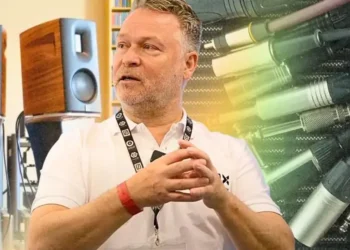Why 192 kHz Audio Often Sounds Worse Than 44.1 kHz — According to Audio Experts
High-resolution audio files boasting 192 kHz sample rates are often marketed as “studio quality” and the ultimate in sound fidelity. But many top audio engineers and experts disagree. They say that not only does 192 kHz audio provide no real audible benefit over standard CD quality, it can actually harm your listening experience.
Here’s why 44.1 kHz — the sample rate used on CDs — is often the smarter and cleaner choice for most music lovers.
The Basics: What Sample Rates Mean for Your Ears
Most humans can hear sounds roughly between 20 Hz and 20 kHz. This is well-established by decades of research. Thanks to a mathematical principle called the Nyquist-Shannon theorem, digital audio only needs to sample at twice the highest frequency you want to capture. That means a sample rate of around 40 kHz is enough to capture everything humans can hear.
CDs use 44.1 kHz to give some breathing room for technical reasons, like reducing distortion from filters.
So why push it all the way up to 192 kHz — more than four times what you really need?
The Problem with 192 kHz: Distortion and Overkill
The short answer: more data isn’t always better. In fact, the extra ultrasonic frequencies in 192 kHz files can cause distortion.
Christopher “Monty” Montgomery, a respected digital audio engineer behind the Ogg Vorbis codec and FLAC, explains it simply: “192 kHz digital music files offer no benefits. They’re not quite neutral either; practical fidelity is slightly worse.”
Dan Lavry, a pioneer in professional audio converters, agrees. He points out that sampling three times faster than necessary can actually reduce accuracy and introduce distortions.
The main issue? Consumer speakers and amplifiers aren’t designed to handle frequencies above 20 kHz. When they try, ultrasonic signals can interact inside the equipment and create audible distortions—sounds you definitely don’t want to hear.
Monty gives a striking example: two ultrasonic tones at 30 kHz and 33 kHz can combine in imperfect gear to produce sounds that sneak into your audible range, messing with the clarity.
Real-World Impact: Why 44.1 kHz Is Often the Better Choice
Paul Maunder, a Pro Tools-certified engineer, has seen this firsthand. He advises sticking to 44.1 kHz or 48 kHz sample rates because higher rates can cause unwanted distortion during playback, especially when using popular audio plugins.
Higher sample rates also put more strain on your CPU and reduce the available processing power for effects—meaning your computer and audio software might struggle more.
Montgomery sums it up: 192 kHz audio takes up six times more storage space but doesn’t improve sound quality. Instead, it can add distortion and complicate playback.
Can People Actually Hear the Difference?
Maybe you think your ears are special enough to tell high-res audio apart from CD quality. Blind tests suggest otherwise.
Dr. Mark Waldrep, founder of AIX Records, conducted large-scale listening tests with everyone from casual listeners to professional engineers. His conclusion? “Hi-Res Audio provides no perceptible fidelity improvement over standard CD quality.”
Similarly, a study by the Boston Audio Society found listeners couldn’t reliably distinguish high-res files from 44.1 kHz files when played through top-tier audio systems.
Why Mastering Engineers Prefer 44.1 or 48 kHz
If anyone should hear the difference, it’s mastering engineers—experts trained to catch subtle changes in sound quality.
Bob Katz, a Grammy-winning mastering engineer, says that going from 44.1 kHz to 48 kHz/24-bit is a noticeable improvement, but pushing beyond that to 96 or 192 kHz doesn’t make the music sound better.
“Better sound comes from good recording, mixing, and mastering—not higher sample rates,” Katz emphasizes.
Mixing engineer Dan Worrall agrees. He often debunks the myth that higher sample rates improve playback. “A great mix at 44.1 kHz will always beat a mediocre one at 192 kHz,” he says.
When Do Higher Sample Rates Actually Matter?
It’s important to note: experts aren’t saying 192 kHz is useless.
During production, higher sample rates help engineers with pitch shifting, extreme equalization, or time stretching—tasks that benefit from extra audio data.
However, these benefits are for production, not for listening. Once the music is mastered, distributing it at 192 kHz provides no real advantage and only burdens your device.
So Why Is 192 kHz Still Being Sold?
The answer is simple: marketing.
“High-resolution” sounds impressive and helps sell albums, even if it doesn’t improve the sound. Monty puts it plainly: “192 kHz is a solution to a problem that doesn’t exist.”
The obsession with specs distracts from what truly improves music quality: mastering skill, source recordings, and playback equipment.
The Bottom Line: Stick with 44.1 kHz and Focus on What Matters
From blind tests to mastering studios, the verdict is consistent: 44.1 kHz/16-bit is the sweet spot for most listeners. It delivers all audible sound, avoids distortion from ultrasonic frequencies, and is widely compatible.
If you want better sound, focus on:
- Upgrading headphones or speakers
- Listening to well-mastered music
- Avoiding low-quality MP3s and brickwalled mixes
- Improving your room’s acoustics
Leave the 192 kHz files to the lab and marketing hype—and enjoy your music the way it was meant to be heard.
This article was rewritten by JournosNews.com based on verified reporting from trusted sources. The content has been independently reviewed, fact-checked, and edited for accuracy, neutrality, tone, and global readability in accordance with Google News and AdSense standards.
All opinions, quotes, or statements from contributors, experts, or sourced organizations do not necessarily reflect the views of JournosNews.com. JournosNews.com maintains full editorial independence from any external funders, sponsors, or organizations.
Stay informed with JournosNews.com — your trusted source for verified global reporting and in-depth analysis. Follow us on Google News, BlueSky, and X for real-time updates.













